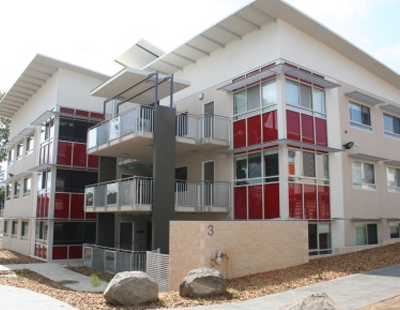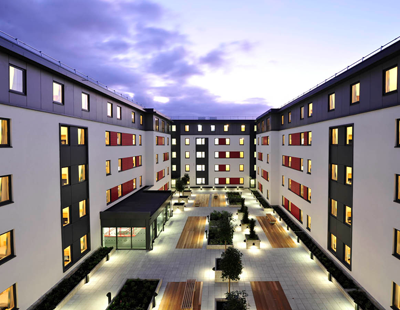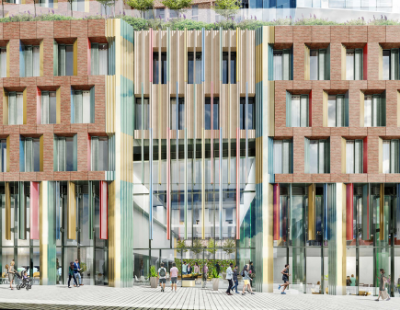These sites are the first in an impressive, £355 million development pipeline of co-living developments being brought forward by Crosslane Co-Living, with two more secured sites in prime London commuter belt locations, and another in the increasingly dynamic Liverpool market. These are set to deliver a further 1,420 units and will enter planning consultation in 2020.
Overall, the five sites will deliver 1,786 units at a Gross Development Value (GDV) of £355 million.
Crosslane Co-Living’s management team ‘have been quietly refining their offer’ over the last 18 months, with an entrance into the co-living sector seen as a natural evolution of Crosslane Property Group’s decade in the PBSA sector.
Crosslane Co-Living say they are able to both develop and operate the assets, ‘leveraging their proven track record in both domains’.

Where rising demand from students for more flexible and convenient living space has boosted the PBSA market, similar pressures from the growing urban young professionals’ market for this kind of living has led to a rise in co-living developments.
Crosslane Co-Living is hoping to pounce on this rising trend by delivering high-quality affordable housing solutions in urban areas, with all-inclusive utilities and shared amenities to create a community environment.
The co-living sector is starting to demonstrate the sort of growth that will make people sit up and take notice, but its future potential to scale is perhaps the most promising thing to investors and developers, with increasing institutional investment in non-traditional real estate.
As our recent story pointed out, JLL’s recently published European Coliving Index revealed that Europe’s co-living sector is expected to triple in size during the next two years to more than 20,000 beds, up from 6,480 beds at present.
Mark Hughes, managing director at Crosslane Co-Living, said: “We have been avidly following urban market trends and the emergence of co-living has presented a prime investment opportunity for us and our clients. We are pleased to now be bringing our first two co-living sites to market and will be working closely with JLL to progress investment conversations.”
He added: “In the coming year, we will be extending our pipeline in three new UK city locations and are actively looking for additional sites to meet the growing institutional investment opportunity available in this living asset class.”
Richard Lustigman, director of living capital markets, co-living at JLL, said the firm have been working closely with the Crosslane Co-Living team for the last 18 months and ‘have seen them strive for the most innovative and disruptive solutions to meet the changing needs of the modern urbanite’.
“Faced with persistent financial and supply pressures, co-living assets offer choice in a market short of options,” Lustigman said. “Our latest European Coliving Index, has proven that the sector is at a ‘tipping point’ across Europe, and we look forward to continuing our partnership with Crosslane Co-Living as their development pipeline grows further.”
The co-living sector – a rental accommodation model aimed mostly at young professionals eager to stave off the modern epidemic of city-based loneliness with communal areas and the creation of a strong community ethos – has been helped by the global rise of the sharing economy and its increasing appeal to institutional investors thanks to strong returns and rising maturity.
According to JLL, recent months have seen the co-living market gather considerable momentum. The Collective, responsible for the first UK co-living development when its Old Oak Common site opened in 2016, recently announced plans – backed by DTZ Investors – to raise up to £650 million for a co-living fund, which would hold a portfolio of around six to 10 assets. It aims to attract £1 billion of investment over the next decade.
In Asia, meanwhile, co-living operator Hmlet recently launched in Japan with joint-venture partner Mitsubishi Estate. The business, based in Singapore, is aiming for 10,000 rooms across Tokyo, Osaka and Nagoya over the next three years, and is backed by Burda Principal Investments, Sequoia India and The Reinventure Group.
Lustigman says the co-living concept is now a credible proposition thanks to ‘institutional investors aggressively seeking new ways to deploy capital’.
He told JLL’s The Investor: “Recent deals and the launch of new partnerships prove that the co-living sector can finally shake off any notion that it is simply a fad. With young, fresh leaders on the operating side, it’s a sector which is now blossoming in its own right.”
JLL’s data suggests that, in Europe, approximately 60% of the 23,000 beds became operational in the past two years, while the firm also predicts that the co-living sector in most parts of Asia Pacific will evolve to appeal to a large and broader tenant base over time, building from its early stages of development at present.
It appears to be a similar story in the UK – small but fast-growing, with increasing interest from developers and investors.
Crosslane Group’s entrance into the market could certainly mark a shift in how people now view this emerging asset class.











.png)









Join the conversation
Be the first to comment (please use the comment box below)
Please login to comment